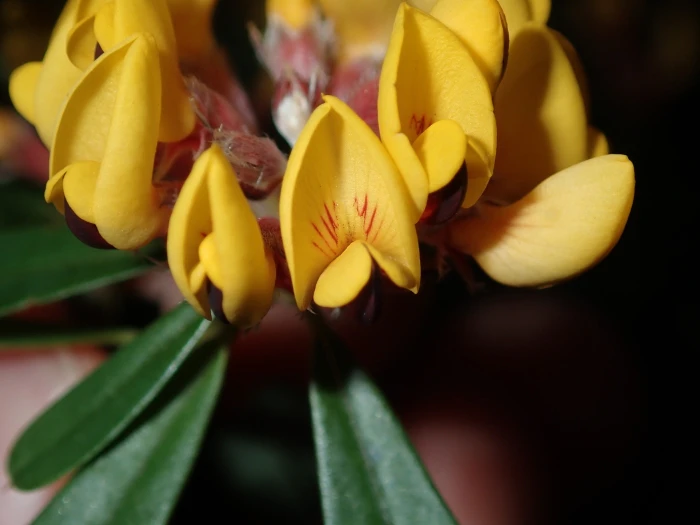Large-Leaf Bush-Pea
(Pultenaea daphnoides)
Large-Leaf Bush-Pea (Pultenaea daphnoides)
/
/

Thomas Mesaglio
CC BY 4.0
Image By:
Thomas Mesaglio
Recorded By:
Copyright:
CC BY 4.0
Copyright Notice:
Photo by: Thomas Mesaglio | License Type: CC BY 4.0 | License URL: http://creativecommons.org/licenses/by/4.0/ | Rights Holder: Thomas Mesaglio | Publisher: iNaturalist | Date Created: 2020-08-25T11:30:05-07:00 |

























Estimated Native Range
Climate Requirements for O'Fallon, Illinois
| This Plant | Your Site | Plant Suitability for Your Location | ||
|---|---|---|---|---|
| • Precipitation | 8" - 96" | 38" | Aquatic | Aquatic |
| • High Temp. | 61°F - 100°F | 89°F | Your summer temperatures are normal for this plant. | Excellent |
| • Low Temp. | 29°F - 50°F | 20°F | Your winter temperatures may be too cold for this plant | Too cold |
This plant should grow very well at your location but requires an aquatic environment.
Summary
Pultenaea daphnoides, commonly known as large-leaf bush-pea or large-leaf bitter-pea, is a perennial shrub endemic to a variety of habitats including heathlands, dry sclerophyll forests, and coastal scrub in southeastern Australia. It is found from southeast Queensland, along the coast and tablelands of New South Wales, to Victoria, Tasmania, and southeast South Australia, including Kangaroo Island. This shrub typically reaches 3-10 feet in height and has hairy, four-angled stems. Its foliage consists of wedge-shaped to egg-shaped leaves that are often clustered. The bright yellow and red pea-like flowers are showy and appear in dense clusters from late winter to early summer (September to November in the Southern Hemisphere), followed by distinctive egg-shaped seed pods.
The large-leaf bush-pea is valued for its hardiness and ornamental qualities, including its vibrant flowers which attract pollinators such as bees. It is suitable for informal hedges and native plant gardens, and can be used to stabilize soil in erosion-prone areas. In cultivation, it prefers well-drained soils, tolerates a range of soil types, and requires low to moderate watering once established. It thrives in full sun to part shade. While generally low-maintenance, it should be planted away from sewer mains due to its root system. There are no major disease issues, but it can be sensitive to root disturbance.CC BY-SA 4.0
The large-leaf bush-pea is valued for its hardiness and ornamental qualities, including its vibrant flowers which attract pollinators such as bees. It is suitable for informal hedges and native plant gardens, and can be used to stabilize soil in erosion-prone areas. In cultivation, it prefers well-drained soils, tolerates a range of soil types, and requires low to moderate watering once established. It thrives in full sun to part shade. While generally low-maintenance, it should be planted away from sewer mains due to its root system. There are no major disease issues, but it can be sensitive to root disturbance.CC BY-SA 4.0
Plant Description
- Plant Type: Shrub
- Height: 1.5-5 feet
- Width: 1.5-3 feet
- Growth Rate: Moderate
- Flower Color: Yellow
- Flowering Season: Spring, Summer
- Leaf Retention: Evergreen
Growth Requirements
- Sun: Full Sun, Part Shade
- Water: Medium
- Drainage: Medium, Fast
Common Uses
Border Plant, Butterfly Garden, Groundcover, Low Maintenance, Showy Flowers
Natural Habitat
Heathlands, dry sclerophyll forests, and coastal scrub in southeastern Australia
Other Names
Common Names: Daphne bush-pea, Large Wedge-pea
Scientific Names: Pultenaea daphnoides, Pultenaea daphnoides var. obcordata, Pultenaea obcordata
GBIF Accepted Name: Pultenaea daphnoides